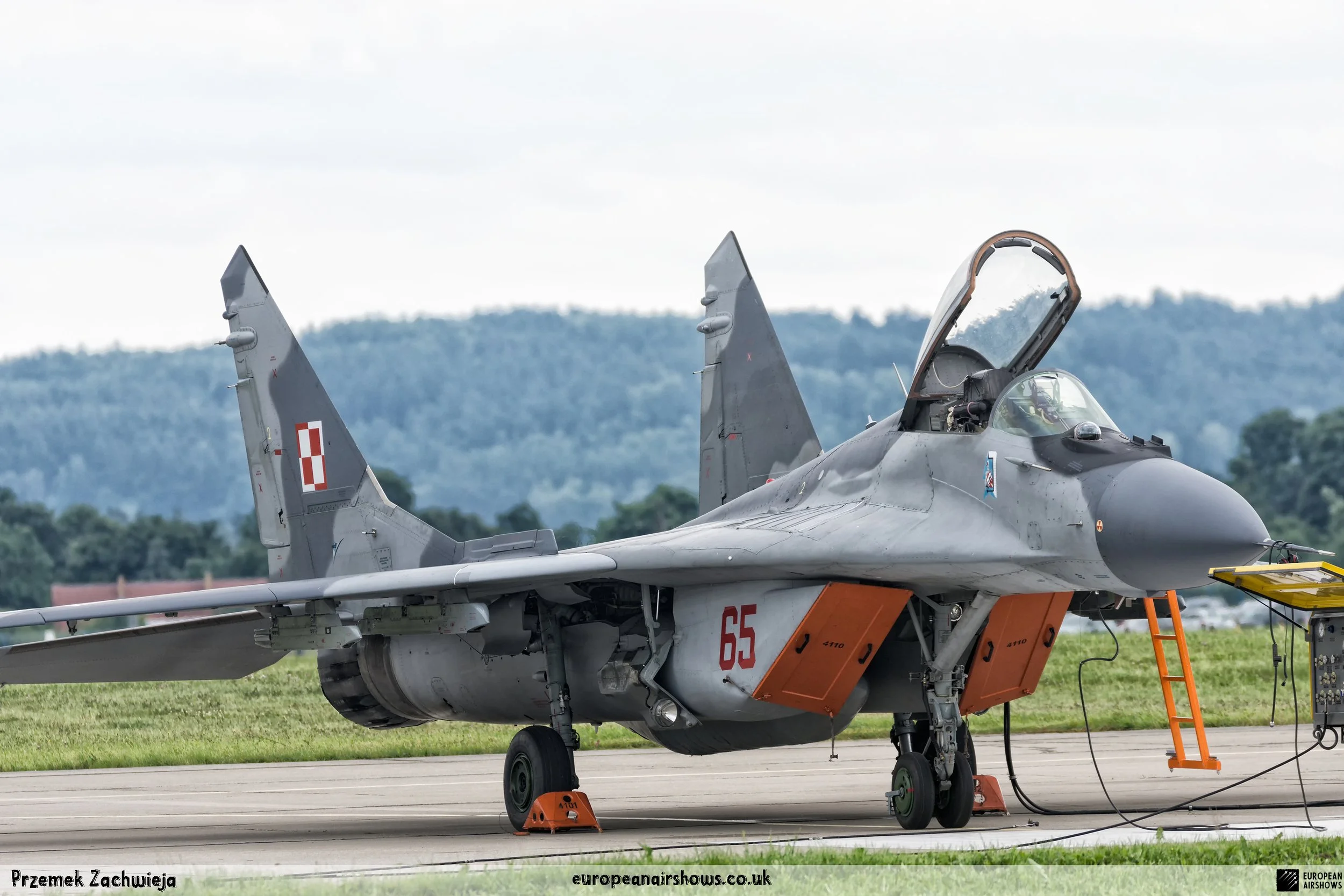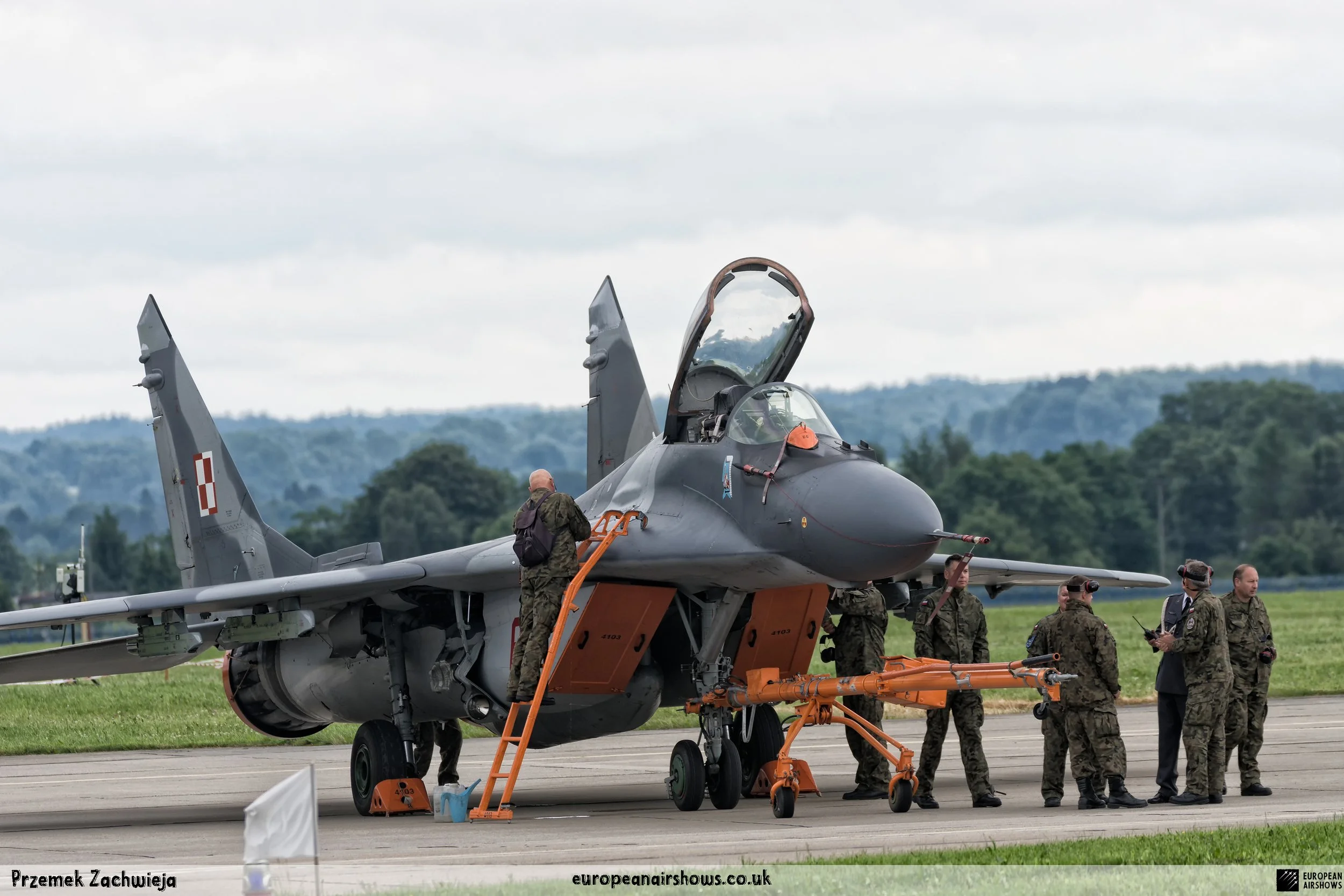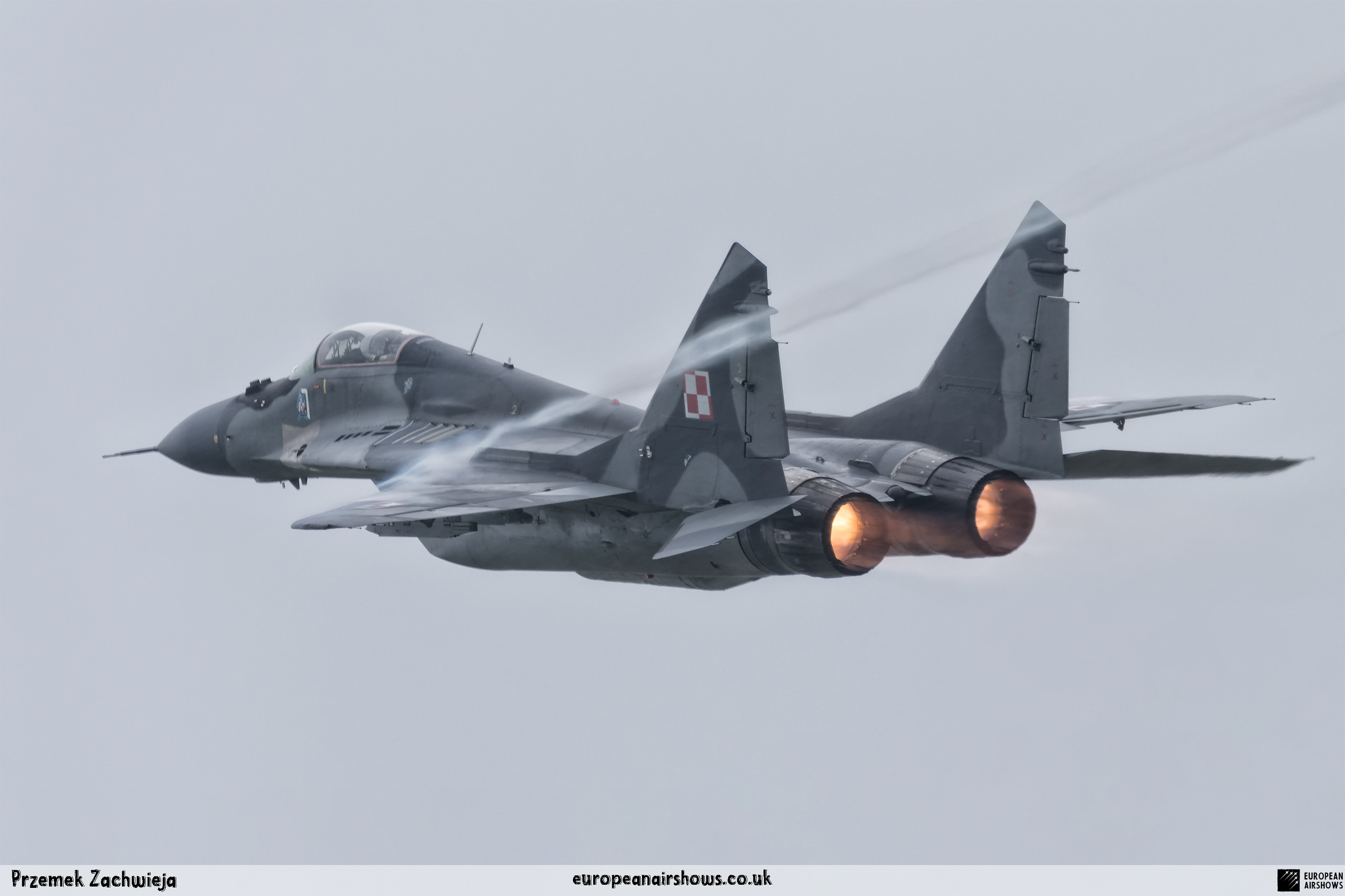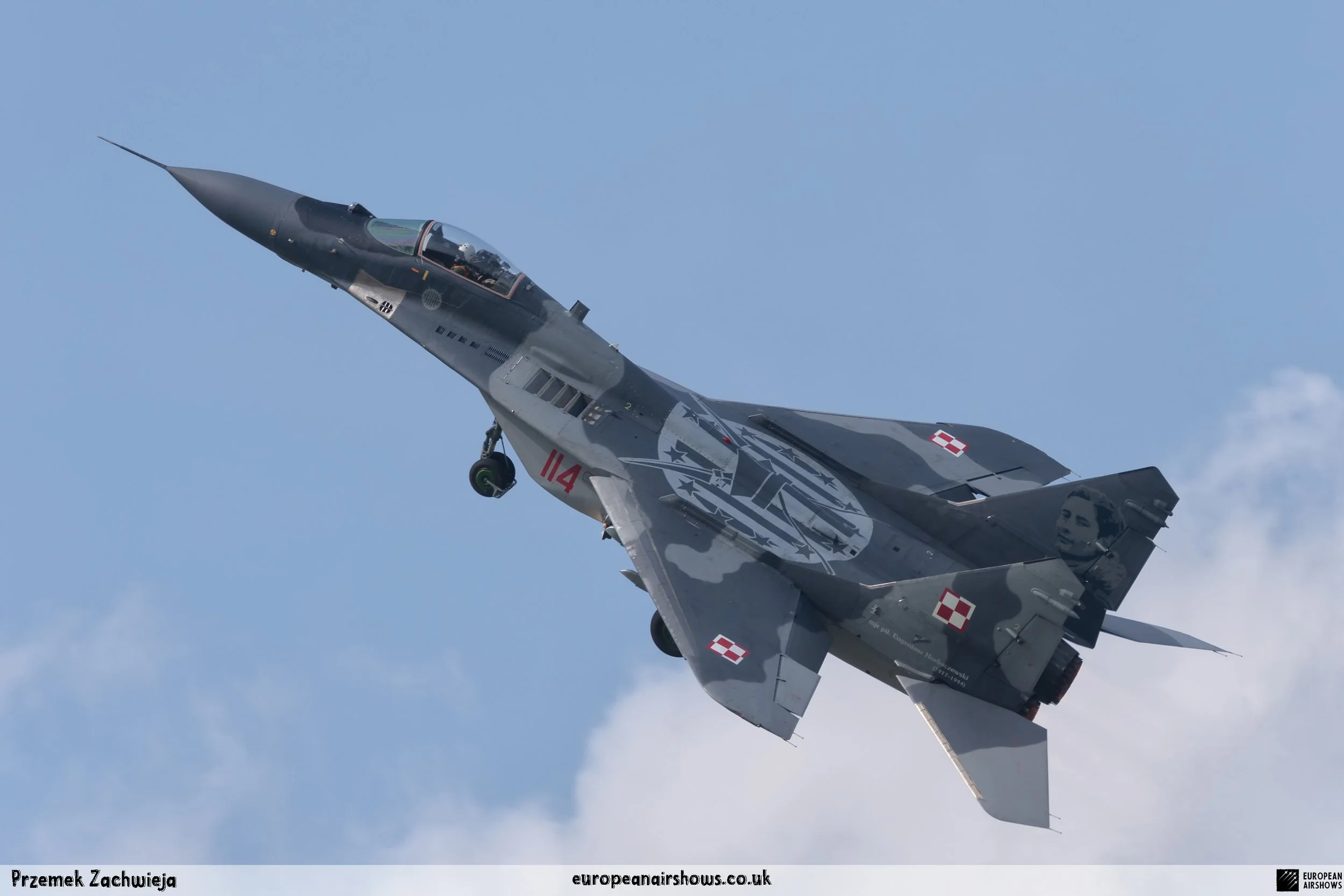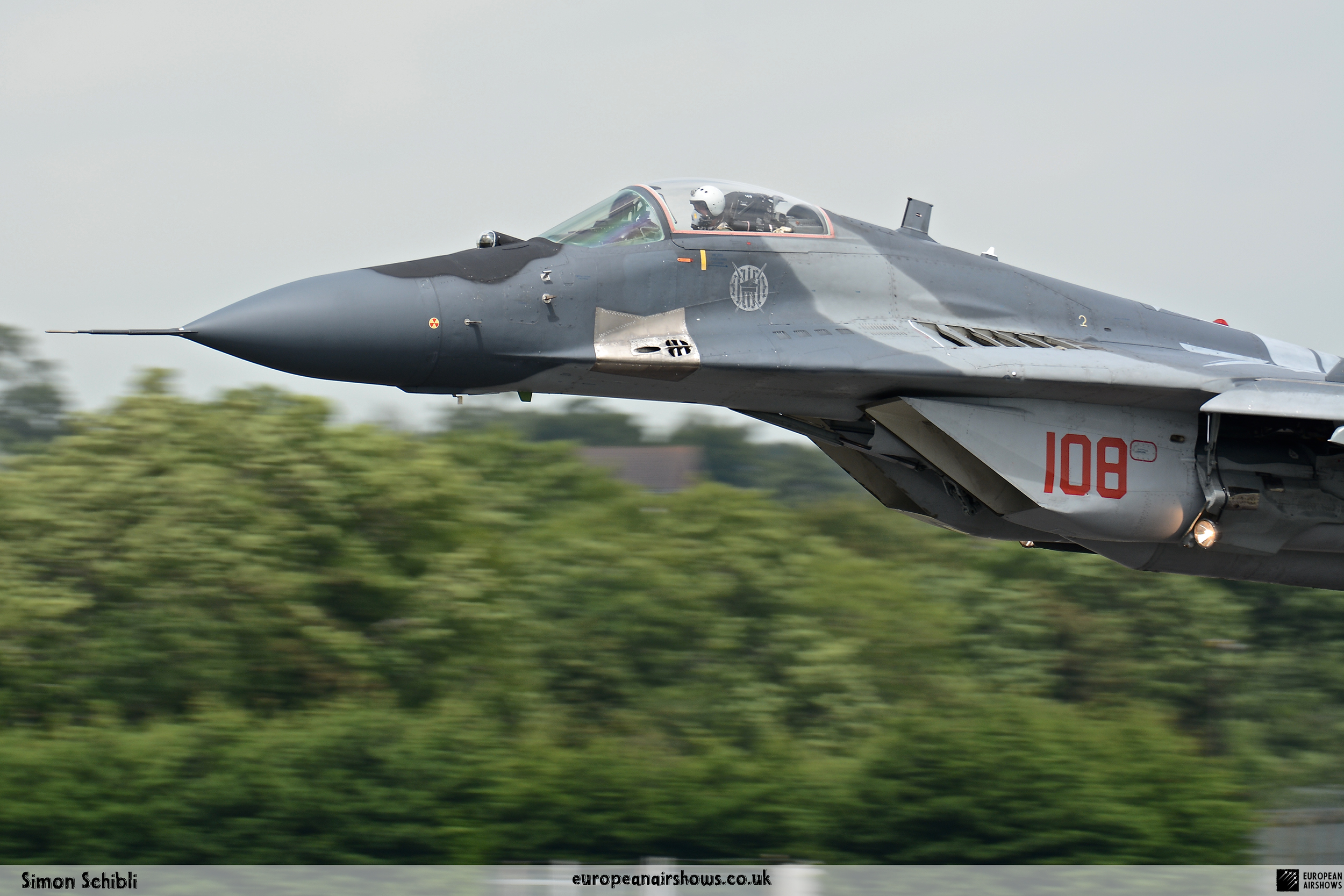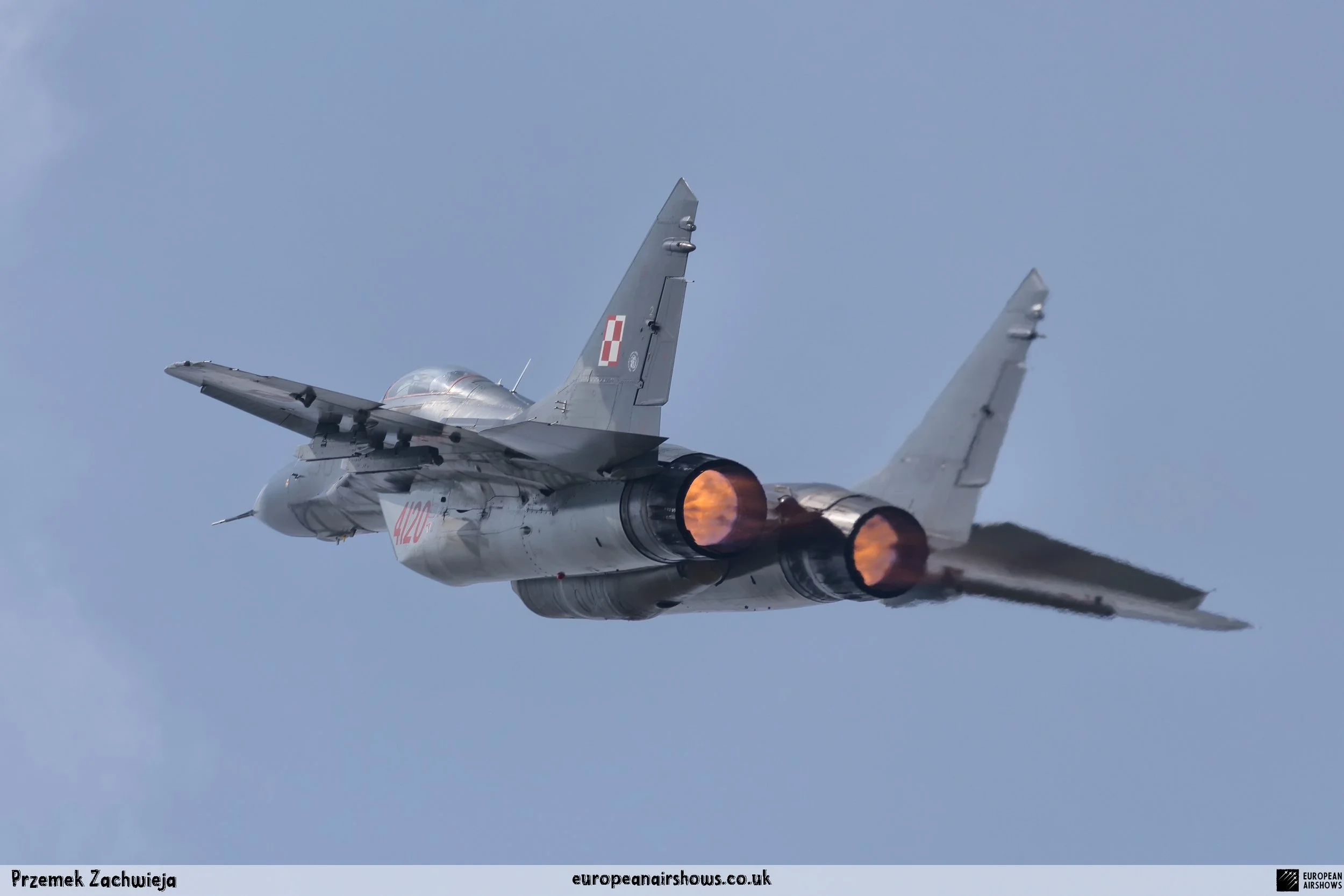
Polish Air Force MiG-29 Solo Display
Note: Both teams were disbanded in 2018 following a series of crashes and incidents involving the Polish MiG-29 fleet.
MiG-29 Solo Display
The Polish Air Force MiG-29 solo display was a prominent aerial performance featuring the Mikoyan MiG-29 fighter aircraft. Two distinct display teams operated within this framework: the Fulcrum Solo Display from the 23rd Air Base, situated approximately six kilometers east of Minsk Mazowiecki, and the Fulcrum Drivers Demo Team based at the 22nd Air Base near the village of Królewo Malborskie. Each team was recognized for its unique display styles, with the Minsk Mazowiecki team traditionally enjoying widespread popularity and representing Poland at numerous national and international airshows.
In 2017, a significant shift occurred when the Fulcrum Drivers Demo Team from Malbork began to dominate the solo display scene. This team took the lead in performing at the majority of airshows across Poland and expanded their presence internationally, participating in events such as the Sanicole Airshow in Belgium, the Bucharest Airshow in Romania in 2017, and the Eurasia Airshow in Turkey in 2018. Their distinctive display techniques and consistent performances contributed to their rise in prominence, surpassing the earlier favored team from Minsk Mazowiecki.
However, between 2017 and 2019, the Polish MiG-29 solo display faced a series of challenges marked by multiple crashes and incidents involving the MiG-29 fleet, which resulted in several fleet groundings. These safety concerns led to the initial suspension and eventual disbanding of both display teams. The final Polish MiG-29 solo display abroad occurred at the RAF Cosford Airshow in June 2018, followed by the last domestic performance at the Świdwin Air Base Open Day a few weeks later. Tragic accidents, including the fatal crash of a Polish MiG-29 on July 6, 2018, and another crash in 2019, effectively ended the possibility of future solo displays with the MiG-29. Consequently, the Polish MiG-29 became the last of its kind to perform solo demonstrations within NATO.
About the MiG-29
The Mikoyan MiG-29, known by its NATO reporting name “Fulcrum,” is a twin-engine fighter aircraft developed by the Soviet Union’s Mikoyan design bureau in the 1970s. Conceived as an air superiority fighter to rival American aircraft such as the F-15 Eagle and F-16 Fighting Falcon, the MiG-29 entered service with the Soviet Air Forces in 1983. The aircraft was designed to excel in dogfighting, featuring exceptional maneuverability, a high thrust-to-weight ratio, and advanced avionics for its time. Its aerodynamic design, including a mid-mounted swept wing and blended leading-edge root extensions, contributed to its agility and performance in various combat scenarios. Throughout the late Cold War, the MiG-29 served as a cornerstone of the Soviet and subsequently Russian air power, complementing the larger Sukhoi Su-27 in maintaining aerial dominance.
Over the decades, the MiG-29 has evolved from a pure air superiority platform into a versatile multirole fighter capable of executing a wide range of missions. Numerous variants have been developed, including the MiG-29M, which introduced enhanced avionics and improved engines, and the navalized MiG-29K designed for carrier operations. The most advanced member of the family, the MiG-35, incorporates further upgrades such as modern radar systems, infrared search and track (IRST) sensors, and increased fuel capacity, along with compatibility for aerial refueling. These advancements have enabled the MiG-29 to remain competitive in contemporary air combat, with upgrades often focusing on extending service life, enhancing combat capabilities, and integrating NATO-compatible systems for export customers. The aircraft has been widely exported, with over 30 nations operating or having operated the MiG-29, making it one of the most prevalent fighters globally.
Following the dissolution of the Soviet Union, the MiG-29 continued to serve in the air forces of numerous former Soviet republics, primarily under the Russian Aerospace Forces. Financial constraints have occasionally hindered the full modernization of the fleet, but various upgrade programs have successfully enhanced the aircraft’s performance and longevity. Notably, countries like Germany and Poland have operated the MiG-29, integrating them into their national air defenses and participating in NATO exercises. Recent developments include Poland’s transfer of operational MiG-29s to Ukraine amidst the 2022 Russian invasion, highlighting the aircraft’s ongoing strategic relevance. As of 2024, an estimated 809 MiG-29s remain in active service worldwide, underscoring its enduring legacy as a versatile and formidable fighter aircraft.
Specifications
Crew
1
Length
17.32 m (56 ft 10 in)
Wingspan
11.36 m (37 ft 3 in)
Height
4.73 m (15 ft 6 in)
Max Speed
2,450 km/h (1,520 mph, 1,320 kn)
Combat Range
700–900 km (430–560 mi, 380–490 nmi)
Service Ceiling
18,000 m (59,000 ft)
Rate of Climb
330 m/s (65,000 ft/min)
MiG-29 in the Polish Air Force
The Polish Air Force first acquired MiG-29 fighters in 1989, receiving 12 aircraft (9 MiG-29A and 3 MiG-29UB) from the Soviet Union. These jets were stationed at Mińsk Mazowiecki and operated by the 1st Fighter Aviation Regiment. In 1995-1996, Poland expanded its fleet by obtaining 10 additional MiG-29s (9 MiG-29A and 1 MiG-29UB) from the Czech Republic in exchange for helicopters. Later, in 2003-2004, Poland received 22 MiG-29s from Germany, which had inherited them from the East German Air Force after reunification; of these, 14 were refurbished and entered service, bringing Poland’s total to approximately 32 operational MiG-29s.
Since their introduction, MiG-29s have been integral to Poland’s air defense, especially after the country joined NATO in 1999. They have participated in key NATO missions, such as the Baltic Air Policing operation, safeguarding Baltic states’ airspace, and international exercises like the NATO Tactical Leadership Programme, often acting as aggressor aircraft. In 2011, Poland launched a modernization program to align its MiG-29s with NATO standards, upgrading avionics and communication systems to enhance interoperability with allied forces, ensuring their continued effectiveness in joint operations.
As of 2023, Poland’s MiG-29 fleet has diminished due to retirements and transfers. Amid Russia’s invasion of Ukraine, Poland sent several MiG-29s to the Ukrainian Air Force in 2023 to support its defense efforts. Concurrently, Poland has shifted toward Western aircraft, receiving F-16 Fighting Falcons since 2006 and signing a deal in 2020 for 32 F-35 Lightning II jets, with deliveries slated for 2024. The MiG-29s are set to be phased out as the F-35s enter service, signaling the end of Soviet-era aircraft in the Polish Air Force.
Did You Know?
- The MiG-29 can perform the "Tail Slide," a maneuver where the aircraft climbs vertically until it stalls and slides backward before recovering, demonstrating its exceptional agility.
- It was designed as a direct counter to the U.S. F-15 Eagle and F-16 Fighting Falcon, embodying the Soviet Union's push for air superiority during the Cold War.
- The MiG-29's advanced radar and infrared search and track (IRST) system allow it to engage targets without relying solely on radar, enhancing its combat flexibility.
- Variants like the MiG-29K have been adapted for carrier operations, while the MiG-35 pushes the design further with modern avionics and improved engines.
- Operated by over 30 countries, including Poland, India, and Ukraine, the MiG-29 has seen action in conflicts like the Yugoslav Wars and the 2022 Russian invasion of Ukraine.

